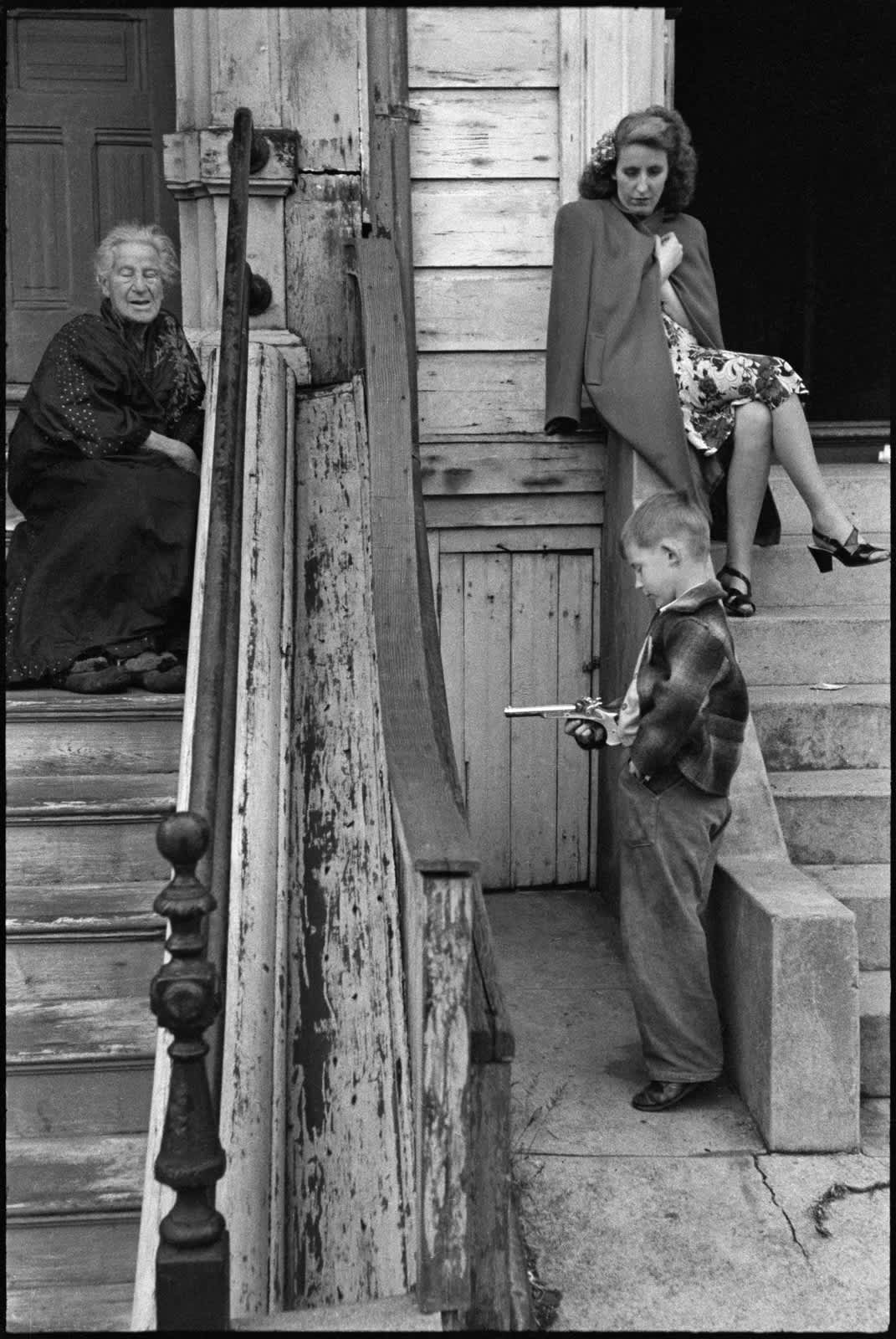1. Initially, I was in awe of Ho’s photos. I love the neutral beige and grey tones because it reminds me of nostalgic vintage photos. I also love that his subject matter is street life, and plays with the juxtaposition between dark and light that shows the distinction between architecture and humanity, like arches, straight lines, etc. that frame people.
2. Fan Ho’s work can be categorized as street photography because the majority of the settings he photographs are the streets.
3. Henri Cartier-Bresson was a humanist photographer with a knack for candid photography. While they both captured people on the streets, the people in Fan Ho's shots were often small in comparison to their surroundings, so more of the focus was on the street life they occupied. I enjoy Ho's work more than Cartier-Bresson's because it is more romanticized and comforting than Bresson's honest, unsettling work, and I prefer the shades and shapes of Ho's photos.

4. If someone made Ho's work today, it would be much more difficult to do so, and would likely be censored due to the extreme surveillance China's citizens are currently subjected to. If it were possible to share uncensored photos, the geometric shapes Ho used to frame his subjects would likely come off as much more compressed and oppressive to reflect the times.
5. I agree with Fan Ho's quote, "My belief in art creation is to try anything" because if he hadn't taken the bold step of experimentation with new forms of photography, it is unlikely that he would have been so successful in the creation of such beautiful photographs. This applies to other trailblazers in the arts as well; an artist's bravery to show their unique perspective to the world is what allows art to progress.
Comments
Post a Comment